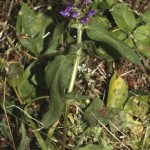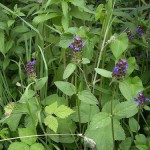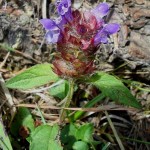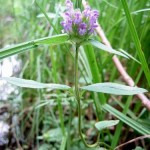Heal All – Prunella vulgaris
|
Current Demand = GOOD |
Parts Used: Herb |
 |
 |
 |
 |
Family: Labiatae
Common Names: Prunella, Self-heal. Heal-all. Carpenter Weed. Brunella vulgaris…
Description
This perennial has creeping rooting stems with upright flowering stems, oval to diamond-shaped leaves, and compact heads of purple-blue flowers in summer or autumn. Prunella Vulgaris is found growing in waste ground, grassland, woodland edges, usually on basic and neutral soils. It seems to grow just about everywhere. It is a common weed, a low perennial with a short rhizome, reproducing by seeds and short runners that root freely at the nodes. As with other members of the mint family, the stems are square and the leaves are opposite. The stems branch freely and are usually about one foot tall; but when repeatedly mowed, the plants become densely matted, depressed and small-leaved. The lower leaves are petioled, with the blades lanceolate to ovate. The upper leaves are sessile, subtending the flower cluster. The flower cluster is a close thick spike with three flowers in the axils of each rounded bract. The flowers are two-lipped, the upper lip hood-shaped, and the lower lip shorter and three-lobed. The blossoms are lavender to white and their nectar attracts honeybees, bumblebees and some kinds of butterflies. Blooming time is March to frost. Growing region: Heal all herb can be found throughout North American. It can be seen growing in lawns, waste areas, fields and fence rows.
Harvesting/Drying
Parts Used: herb
For maximum potency heal all herb should be harvested during the mature flowering stage from June to September. All aerial parts (above the ground) can be harvested. Cut plant just above the surface of the ground leaving the root system for future growth. Heal all herb can be harvested more than once in a season from the same plant when cut and the root system is left in place.
Make sure all roots and foreign objects such as stones, grass or tree leaves are removed. In a warm dry area such as a barn loft or attic either place, lay plants in a thin layer or on a screen if possible, or hang multiple plants together in small bunches. When drying any leaf or herb, avoid the sunlight as this will bleach the color of your herbs and greatly decrease the value. If you prefer to hang your herbs for drying, do not tie bunches too tight or the stems will mold. If drying on a flat surface, turning daily is recommended to speed the drying process and discourage mold. Avoid combining fresh crops and dry or partially dry crops. When handling dried herbs take care to avoid crushing to many leaves and flowers. Keeping dried plants in tact will often increase the value of your crop.
The key to drying any root, herb or bark is an even combination of heat and airflow. Never dry in a microwave or oven.
Once your herb is completely dry (the leaf will crumble) in 3-5 days depending on drying conditions. Place the herbs carefully into a cardboard box or paper bag for storage in dry area until ready for use or to sell. Do not store in plastic or will mold or turn black.
Planting/Cultivation
Prunella vulgaris grows well in average to good soil, where plants get full sun to partial shade. They prefer acid, neutral and basic soils that are moist. New sprouted plants can be transplanted in early spring. They can propagate from cuttings but using the root segments removed from clumps is the easiest method.
Sow seed in very early spring in a flat outdoors, or give a short cold and moist conditioning treatment before sowing in a warm place. It transplants and spreads easily and when large enough place in individual pots and plant them in the summer.
Attributes (Images)
By Walter Siegmund (Own work) [GFDL or CC BY-SA 3.0], via Wikimedia Commons
By Kristian Peters — Fabelfroh 13:10, 18 October 2006 (UTC) (photographed by myself) [GFDL or CC-BY-SA-3.0], via Wikimedia Commons
 Root Buyer
Root Buyer